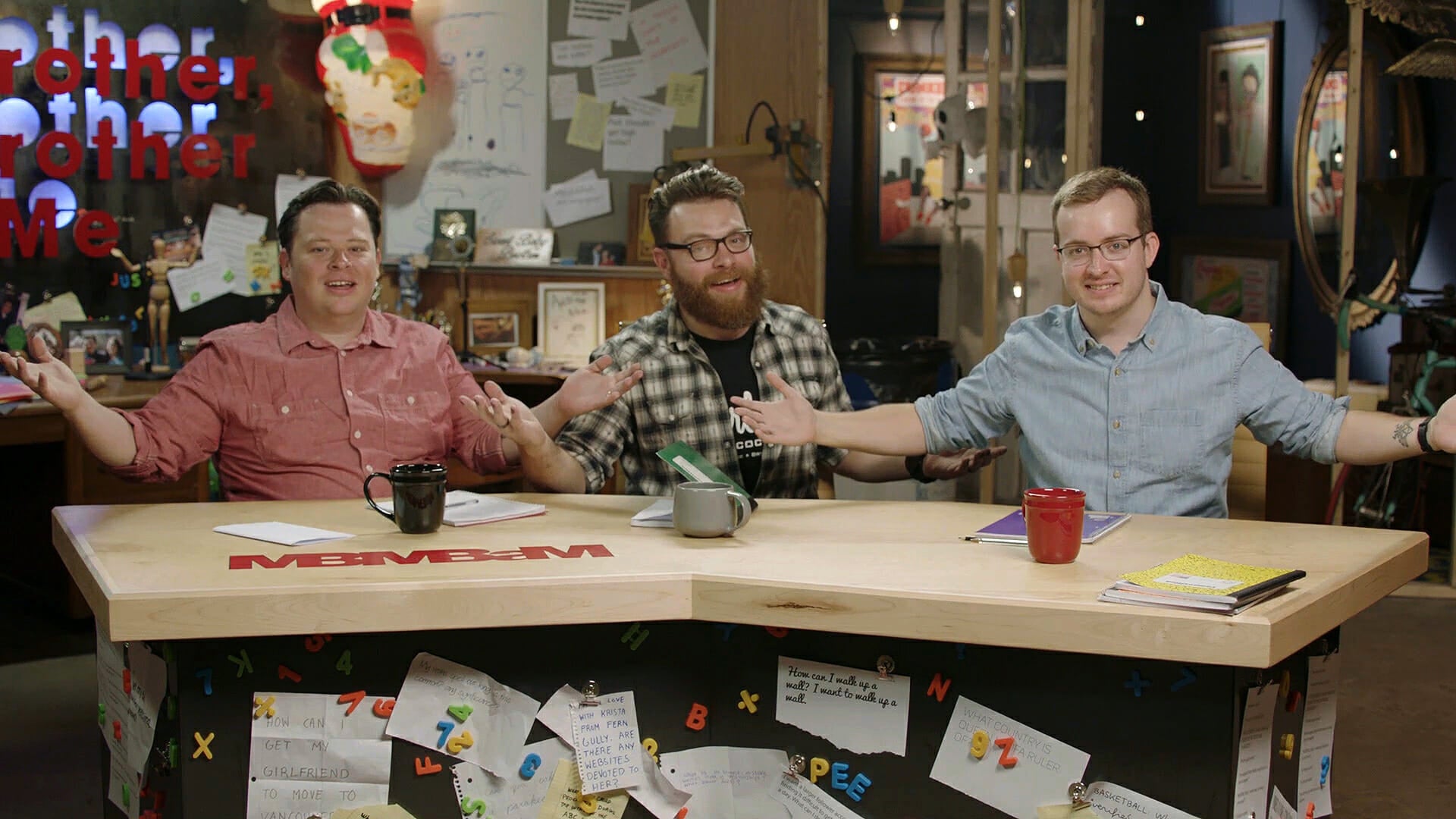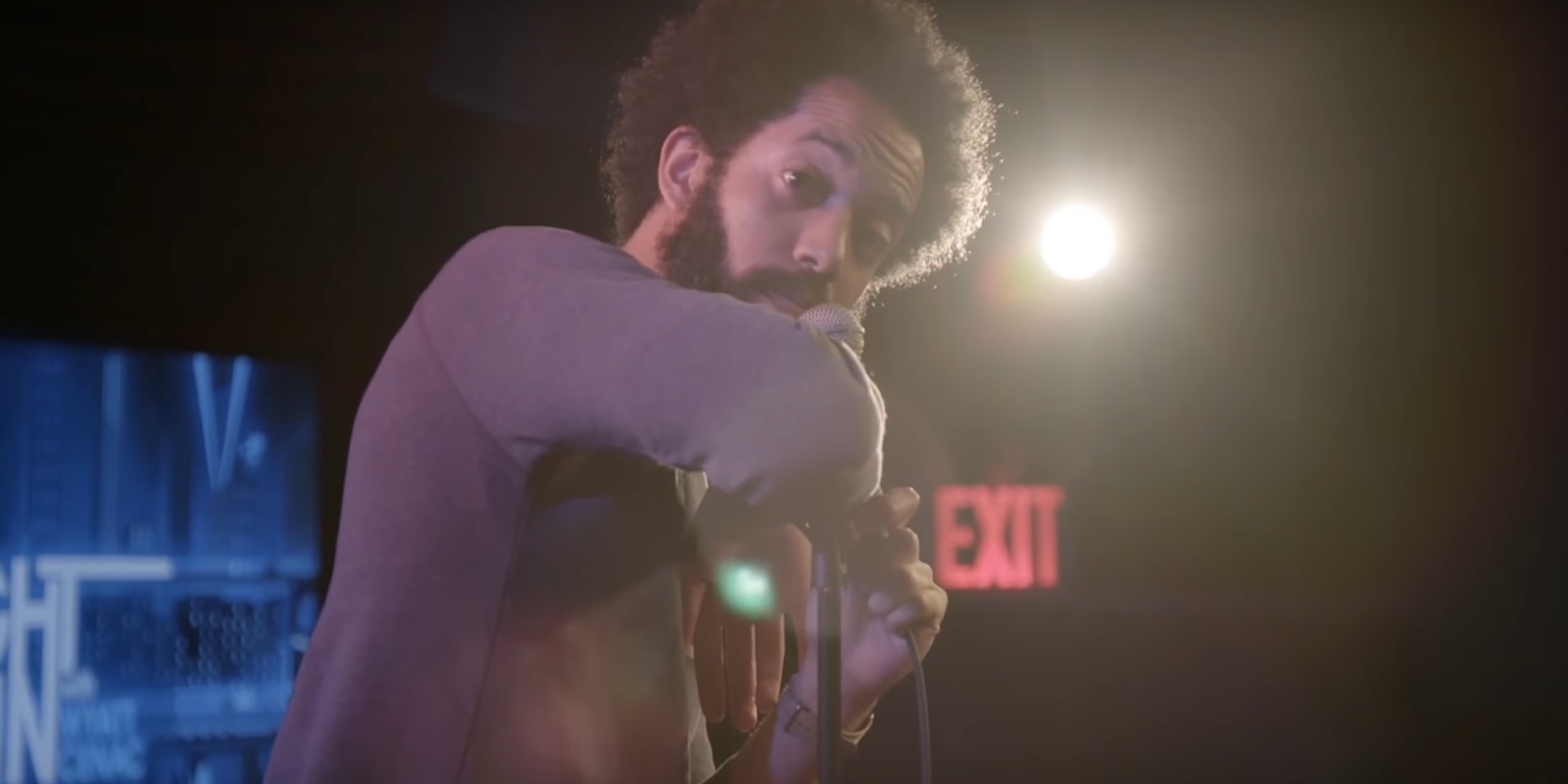It’s Saturday night in Austin, Texas, and Wyatt Cenac stands onstage at Esther’s Follies, trying to navigate some blustery patrons using their outside voice. Then he brings up a guest: Not a big-name comedian, but a representative from the International Rescue Committee, to announce that throughout the month of March, Seeso will donate a portion of subscription fees to the global aid organization. When Cenac asks the audience if it knows what Seeso is, there’s a smattering of applause and hoots, but also a few audible “nos.”
Seeso, NBCUniversal’s year-old streaming comedy site, made a major promotional push during SXSW, seeking not just to dole out “Keep Comedy Weird” buttons, but raise awareness outside the brand. Cenac’s Night Train, the long-running Brooklyn, New York, standup showcase turned Seeso series, was one of four Seeso shows at the festival. The lineup included Joel Kim Booster, Dulcé Sloan, and John Hodgman. Before the show, a curious patron asked a pertinent question in the lobby: “What’s Seeso?”
Seeso doesn’t have the name recognition of a Netflix or Amazon just yet, but since debuting in January 2016, the $3.99-a-month service has carved out its own niche in the comedy programming space. Last year it debuted original shows like Cameron Esposito and Rhea Butcher’s Take My Wife, Dan Harmon’s HarmonQuest, and Bajillion Dollar Propertie$. These series are a little more left-field than you might find even on major streaming outlets. Bajillion Dollar Propertie$ is largely improvised. HarmonQuest is about roleplaying. Seeso’s The UCB Show tested out whether people want to watch improv on TV. Seeso wanted to experiment with the “semi-scripted” format, says Kelsey Balance, head of programming. The “throughline” is taking risks and being experimental.
“We ended up producing and airing 23 original series and about 20 standup specials,” Balance says of Seeso’s first year, “which, for a new network, is a lot. But even looking at the landscape, with the increase in number of shows out there, for one network it is a lot.”
Whereas Netflix is fortifying its standup slate with spotlight names like Louis C.K., Dave Chappelle, and Amy Schumer, Seeso took a different approach. It delivered a flood of standup specials in a 12-week run before Christmas, dubbed the “12 Weeks of Standup.”
“Early on, we wanted to be thoughtful in our approach to standup,” Balance says. “We wanted to take a really big bet on it. And when you look at the landscape of standup and the more traditional perspective, we weren’t sure if our strategy should be the same or different.”
Night Train came to life in Brooklyn right before the 2012 election, and over the next four years, the weekly showcase drew a loyal audience and revolving door of comedic talent. Cenac says Seeso was interested in trying more live standup in intimate spaces, like Big Jay Oakerson’s What’s Your F@%king Deal?!
https://www.youtube.com/watch?v=MS-8KVuVgLM
“When we approached this, our thought was, let’s just go to our regular audience,” says Cenac. “Let’s bill it with the people who’ve been coming to the show for the last four or five years. That’s what the audience is made of.
“If you kind of break the artifice down a little bit, then hopefully somebody’s watching at home, [and] they don’t feel like they’re watching something that they missed out on,” he adds. “They get to feel like they’re part of what’s going on.”
Cenac credits producer Marianne Ways with booking diverse talent, and balancing more established comedians with newcomers. Season 1 saw Sasheer Zamata, Phoebe Robinson, Janeane Garofalo, Hari Kondabolu, Aparna Nancherla, and Janelle James, among others.
Season 2, which debuts this summer, will feature Baron Vaughn, Chris Gethard, John Hodgman, Shane Torres, and Joel Kim Booster.

While Seeso isn’t sharing any specific viewer numbers—much like Netflix—Balance says 70 to 75 percent of the 2017 slate is renewals, and they see a 28-34 demo that’s a “little more male-skewing.” As for new series, My Brother, My Brother and Me is the first podcast-to-TV pick for Seeso. Much like Night Train, the show already had a built-in fanbase, one that’s fostered a My Brother, My Brother and Me Appreciation Group on Facebook and made the brothers McElroy—Justin, Travis, and Griffin—relatable advice-givers. Of course, turning a podcast with a devoted audience into a TV show is no easy task. It couldn’t feel false, or fans would know. They tried to translate the show to video in the past, says Justin, but were “uniformly pretty unsuccessful.”
“It took us two years, but 90 percent of it was figuring out what the show was going to be,” says Griffin.
“Podcasting is a really intimate form of media because you’re usually listening to it in your headphones,” Justin says. “It’s going right into your head… People feel like they know us.”
The idea of a prank show was thrown out, and a sitcom where they all lived together. “Any time the words ‘man on the street’ were mentioned, we reflexively sort of fought that,” Griffin says.
Ultimately, they wanted a format that fit their “extraordinarily limited skill set,” says Justin. “If we were merciful performers, this would have been a much easier road to hoe.”
They wanted the show to feel different, so they went back to their hometown of Huntington, Virginia, to film. The McElroys have an effortless chemistry behind the desk, but when they’re out in the world, and interacting with family and baffled strangers, there’s more of an emotional center, even in an episode about a pro-tarantula parade.
https://www.youtube.com/watch?v=UK7y7POw0yA
Travis says that when he rewatched episodes, he was genuinely touched. “That’s what’s going to kill us at the Emmys, honestly,” he jests. “Is it comedy? Is it a drama?”
Seeso toes that line as well. The platform has picked up a library of lauded sketch shows like Monty Python’s Flying Circus and The Kids in the Hall, as well as seasons of SNL and 30 Rock. British import Flowers signaled a dip into dramedy, and Seeso has pulled out dark British rarities like Garth Marenghi’s Darkplace and Bottom. However, Balance says original programming is actually driving the majority of new subscriptions. The experiment is working, for now.
“The top shows for us all represented different formats,” she says. “Which gives us the ability to continue to have that creative freedom to deliver on our mandate of reaching true comedy connoisseurs and comedy fans and super-serving them great content, but from many different angles and points of view.”


